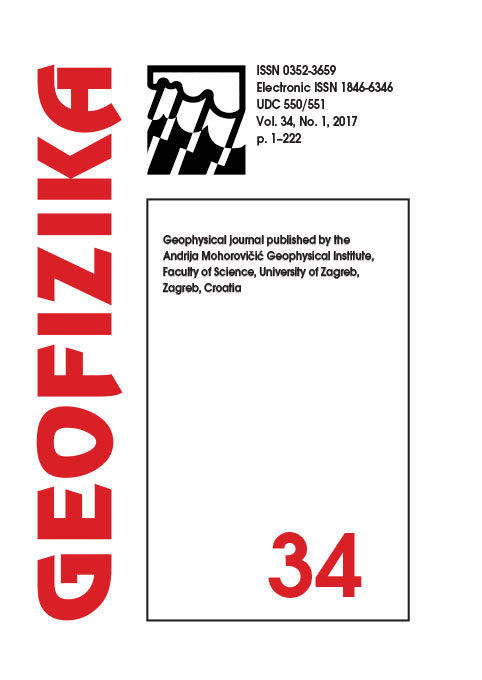Magnetic susceptibility and natural gamma radioactivity as indirect proxies for characterization of sandstones and limestones of the Sabinas basin
DOI:
https://doi.org/10.15233/gfz.2017.34.6Keywords:
magnetic susceptibility, limestones, sandstones, Sabinas basin, natural gamma radioactivityAbstract
An analysis of magnetic susceptibility and natural gamma radioactivity is presented as indirect proxies of the characteristics of sandstones and limestones of the Sabinas basin. These rocks are located in the sedimentary sequence ranging from the Upper Jurassic to the Cretaceous. The magnetic susceptibility indicates changes in the magnetic composition of these rocks and suggests changes in their weathering degree. Ranges of values of magnetic susceptibility in sandstones and limestones allow classifying them into different groups, suggesting variability regarding conditions of origin and evolution. High values of magnetic susceptibility in limestones can be linked to sedimentation in anoxic or reducing environment, as well as with its siliciclastic content. The natural gamma radioactivity expressed in the contents of Th and relationships U/K and Th/U also suggest the degree of weathering of these rocks, mainly in the sandstones. These relations also highlight others characteristics in the sandstones related the probable provenance of sediments, its distance, degree of weathering and transport dynamics. Using the values of U/K ratio in the sandstones, it is possible to suggest the probable quartz-feldspar relationships. These ratio values classified rocks as arkose or quartzarenite, indicating the maturity of the sandstones. According to the U/K ratio values, most of these rocks which show little maturity are called arkose. Using the values of the Th/U ratio, it is possible to suggest the textures of quartzarenites, classifying them as rocks with fabric that is clast-supported or matrix-supported.
Downloads
Published
Issue
Section
License
Copyright (c) 2021 Geofizika journal

This work is licensed under a Creative Commons Attribution-NonCommercial 4.0 International License.

